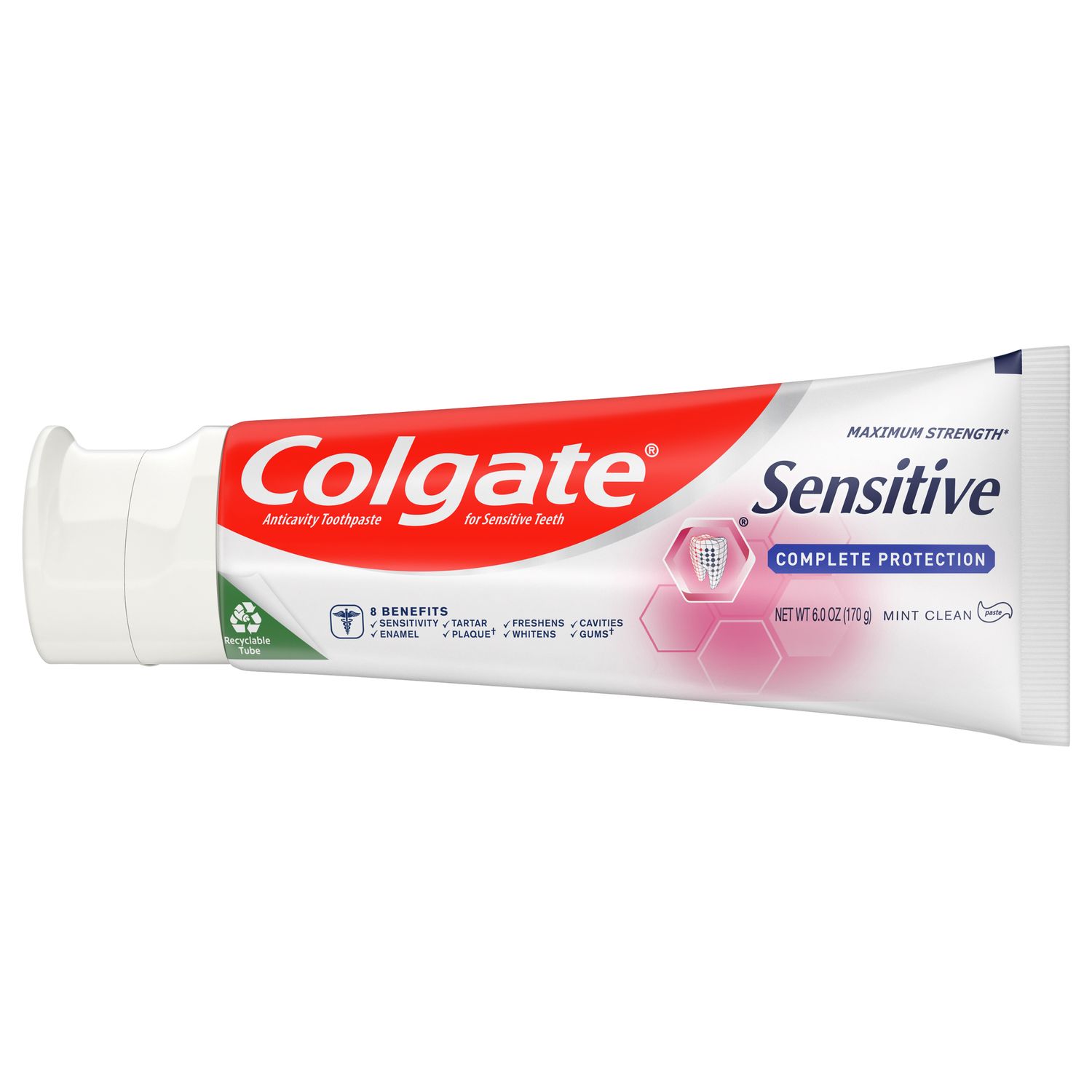
Dentin hypersensitivity is a common condition that was found to affect one in eight adults in patients surveyed in the northwest United States. However, hypersensitivity is a notoriously underreported condition, with a reported prevalence of up to 85% in adult populations. Here, we explore various solutions dental hygienists can offer their patients, both at home and in the office.
What is dentin hypersensitivity?
Dentin hypersensitivity is defined as “a short, sharp pain that arises from exposed dentin in response to non-noxious stimuli, typically thermal, evaporative, tactile, osmotic or chemical, and that cannot be ascribed to any other form of dental defects or diseases.”
There are a number of theories as to why hypersensitivity develops, but the most widely accepted is the hydrodynamic theory whereby a stimulus causes fluid movement to occur within open dentin tubules in exposed dentin. This stimulates the pulpal nerve fibers, eliciting a pain response. Treatment of dentin hypersensitivity focuses on occluding the open dentin tubules and/or desensitizing the pulpal nerves.
In-office solutions for sensitivity
Pro-Argin Technology
Pro-Argin Technology combines 8% arginine with calcium carbonate. Arginine, a naturally-occurring amino acid, forms a positively charged complex on contact with saliva. This complex binds to the negatively charged dentin surface, with the formation of a calcium-rich layer blocking the dentin tubules.
Pro-Argin Technology can be found inColgate Professional Sensitivity Relief Serum, a topical serum that can be applied directly to an affected tooth for rapid relief from sensitivity with a 1-minute fingertipapplication gently massaging the serum over the area. In-office, this serum is ideal for use prior to treatment for patients with sensitivity, making treatment more comfortable. Patients can also take the remainder of the tube home with them and use it when sensitivity strikes.
Sodium fluoride varnish
In-office application of a 5% sodium fluoride varnish, such asColgate PreviDent Varnish, isrecognized as an effective and quick treatment for dentin hypersensitivity. When applied to dentin surfaces, the varnish hardens on contact with saliva and forms a thin layer that adheres to the exposed dentin. In addition, calcium fluoride-like globules form and occlude the open dentin tubules.
Other topical agents
Other in-office options for the treatment of dentin sensitivity include topical application of silver diamine fluoride, oxalates, or glutaraldehyde, which each result in tubule occlusion. Dental materials can be used to relieve sensitivity. Both resin sealants and dental adhesives create a physical barrier over the exposed dentin surface, sealing off open dentin tubules. Likewise, glass ionomer cements create a physical barrier, while also causing the precipitation of a layer of hydroxycarbonate apatite.
Laser therapy
Lasers have shown some success in the treatment of dentin hypersensitivity, although it isnoted that the exact mechanism by which this is achieved is still unclear. Low-output lasers may work by desensitizing the nerve fibers, while high-output lasers may work by occluding the dentin tubules. In onestudy, the combined use of 5% sodium fluoride varnish and an Nd:YAG laser was shown to provide significantly greater relief from sensitivity to cold air blast than either of the two treatments alone (83% vs 50% and 43%, respectively, for 5% sodium fluoride varnish and Nd:YAG laser). Inanother study, high-power diode lasers demonstrated a significant reduction in sensitivity after 15 days had elapsed since treatment.
At-home solutions for sensitivity
Stannous fluoride
Toothpaste containing stannous fluoride, such asColgate Total SF, works by depositing tin, zinc, phosphate and silicon as a layer over the dentin and occludes the open dentin tubules. In anin vitro and clinical evaluation, in vitro the stannous fluoride toothpaste was shown to occlude 82% of dentin tubules, compared to 35% for the control toothpaste. After four weeks, compared to the control toothpaste, the stannous fluoride toothpaste achieved 27.8% and 21.4% greater reduction in sensitivity to tactile and air blast challenges respectively. After eight weeks, the stannous fluoride toothpaste achieved 42% and 32.3% greater reduction in sensitivity to tactile and air blast challenges respectively.
Potassium nitrate
Potassium nitrate depolarizes the pulpal nerves and interferes with the transmission of pain signals to the brain. In a systematic review and meta analysispublished in the Journal of Clinical Periodontology, sufficient evidence was found to show that potassium nitrate toothpastes are effective in managing dentin hypersensitivity. Another option is a prescription level fluoride toothpaste that also contains potassium nitrate, such asColgate PreviDent 5000 Sensitive. This product provides relief from sensitivity and provides added protection against caries in exposed roots and coronally.
Potassium nitrate can also be found in mouth rinses aimed at reducing hypersensitivity. The Journal of the American Dental Association (JADA)reports that twice-daily use of 3% potassium nitrate mouth rinse when used after a regular fluoride toothpaste (non-desensitizing) was effective at reducing sensitivity.
Join us
Get resources, products and helpful information to give your patients a healthier future.
Join us
Get resources, products and helpful information to give your patients a healthier future.









